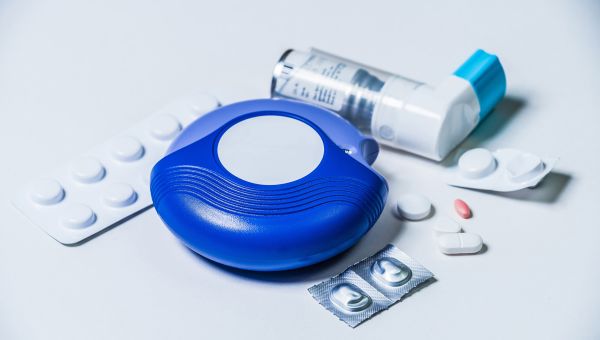Did you know alcohol is a risk factor for cancer? If you answered no, you’re not alone. According to the American Institute for Cancer Research (AIRC), only about one in four Americans realize that alcohol affects your risk of developing cancer, even at low levels of drinking. And yet, in the US, alcohol accounts for about 3.5 percent of all cancer deaths.
“Cancer isn’t just one disease; it’s a bunch of diseases,” says Keith Roach, MD, Sharecare’s chief medical officer and member of its Scientific Advisory Board. “There are many cancers clearly linked to alcohol. Pancreas and liver are the best, well known types.”
In November 2017, the American Society for Clinical Oncology (ASCO), concerned about the lack of awareness, issued a statement about the risks of alcohol for developing a wide range of cancers, including cancers of the breast, esophagus, stomach, throat, mouth and colon. It further stated that the greatest risk is posed by heavy, long-term use. Roach says ASCO’s statement is, “not really a surprise because excess alcohol use does bad things to your immune system and it also causes direct harm to tissues.”
Higher risk of certain cancers
Imbibing too much and too frequently increases the risk of some cancers over others. For example, your risk of developing cancer in the upper digestive tract—in the larynx (voice box), esophagus, throat and oral cavity—are the highest. That makes sense: when you drink, alcohol comes in direct contact with these organs. It also makes sense that the more you drink, the higher your cancer risk. ASCO warns, however, that the risk of cancer exists even if you are a low-to-moderate drinker.
Imbibing too much and too frequently increases the risk of some cancers over others. For example, your risk of developing cancer in the upper digestive tract—in the larynx (voice box), esophagus, throat and oral cavity—are the highest. That makes sense: when you drink, alcohol comes in direct contact with these organs. It also makes sense that the more you drink, the higher your cancer risk. ASCO warns, however, that the risk of cancer exists even if you are a low-to-moderate drinker.
What you drink matters, too
“People who drink higher concentrations of alcohol, such as distilled spirits, have a greater risk [for alcohol-related cancers] than people who consume drinks with lower amounts of alcohol, such as beer or wine, even when corrected for the total amount of alcohol consumed. This is true at least for cancer of the esophagus,” Roach says.
“People who drink higher concentrations of alcohol, such as distilled spirits, have a greater risk [for alcohol-related cancers] than people who consume drinks with lower amounts of alcohol, such as beer or wine, even when corrected for the total amount of alcohol consumed. This is true at least for cancer of the esophagus,” Roach says.
Is any amount safe?
The only way to eliminate your risk of developing an alcohol-related cancer would be to abstain. However, most of us enjoy a drink or two from time to time. Therefore, AIRC recommends limiting alcohol consumption to one drink per day for women and two per day for men.
The only way to eliminate your risk of developing an alcohol-related cancer would be to abstain. However, most of us enjoy a drink or two from time to time. Therefore, AIRC recommends limiting alcohol consumption to one drink per day for women and two per day for men.
Roach says these levels are probably fine from the standpoint of optimal health. In fact, it may be that low levels of alcohol consumption can even confer benefits, such as reducing your risk for heart disease, stroke and diabetes. “However, don’t think that if one glass of wine is making you feel good, and may possibly have some benefit to your heart, two or three glasses, or more, will have more benefit,” Roach explains. “There comes a net harm when a woman exceeds two drinks and a man exceeds three [in one day].”
Be smart about drinking
Know how much alcohol is in your beverage. A standard alcoholic drink does not necessarily correspond to the amount you pour for yourself or are served. One standard drink equals a 12-ounce regular beer (about 5 percent alcohol), a 5-ounce glass of wine (about 12 percent alcohol) or 1.5 ounces of 80-proof spirits, like vodka, whiskey and tequila (about 40 percent alcohol).
Know how much alcohol is in your beverage. A standard alcoholic drink does not necessarily correspond to the amount you pour for yourself or are served. One standard drink equals a 12-ounce regular beer (about 5 percent alcohol), a 5-ounce glass of wine (about 12 percent alcohol) or 1.5 ounces of 80-proof spirits, like vodka, whiskey and tequila (about 40 percent alcohol).
Drink with food. Eating slows down the absorption of alcohol to some extent, Roach says, and allows your body to more safely detoxify the alcohol before your blood levels get so high that it becomes toxic to your brain (intoxication). So, if you’re going to drink, eat something at the same time.
Finally, Roach says, “Everything is a poison in the right dose. Alcohol is a poison at high doses. But like many poisons, it may be that, at levels that are not obviously toxic, there are still some ongoing effects. This is particularly true with cancer, which takes years or decades before people develop signs of it. It’s wise to be cautious with our alcohol intake."
The above article is from ShareCare here.





